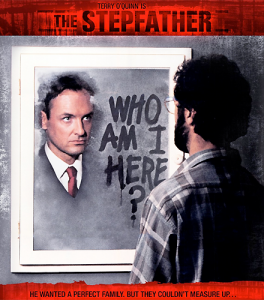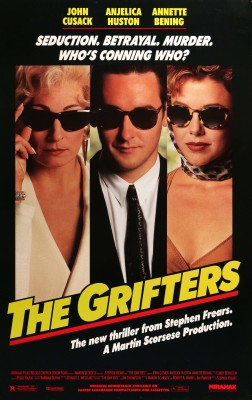Seven-film series features screen adaptations of the hard-boiled crime writer’s work
Special event on Friday, May 12: Abby Westlake and Luc Sante in conversation with program curator Levi Stahl
Museum of the Moving Image, May 12–14, 2017
- Point Blank Poster, 1968
- Lee Marvin as Parker, 1968
- Angie Dickinson with Lee Marvin, 1968
Astoria, Queens, NY, (April 10, 2017)—Donald E. Westlake published nearly a hundred novels under various pseudonyms during his half-century career, the most influential being the hard-boiled Parker novels. Over the years, the hallmarks of a Westlake book never changed: He was a dedicated craftsman, writing clean, unfussy, powerfully effective prose, weaving complicated and surprising plots, and always letting a deep interest in (and often amusement at) human behavior drive the action. His prose has been the font for many and varied works of cinema—more than 30 films have been made of his books. From May 12 through 14, 2017, Museum of the Moving Image presents Crime Scenes: Donald Westlake on Film, an all-35mm screening series, featuring the most successful and interesting films based on Westlake’s books. The seven titles include Point Blank (1967) (starring peak Lee Marvin), The Hot Rock (1972) (with Robert Redford), The Outfit (1973) (with Robert Duvall), Cops and Robbers (1973), and Jean-Luc Godard’s Made in U.S.A. (1967). It also includes two for which he wrote screenplays: the 1987 original The Stepfather and his 1990 Oscar-nominated adaptation of Jim Thompson’s The Grifters. Organized by guest curator Lev Stahl, Associate Film Curator Eric Hynes, and Chief Curator David Schwartz.
Among the highlights of the series is a conversation with Abby Westlake, Donald Westlake’s wife, and historian Luc Sante (Low Life), moderated by guest curator Levi Stahl, with the opening night screening of Point Blank, on May 12.
Donald E. Westlake (1933–2008) was born in Brooklyn and grew up mostly in Albany. He claimed that the first word he learned to read was “police.” “Sometimes,” he wrote, “life really is banal.” As a young man, he moved to New York and learned how to write in large part by seeing how not to do it, assessing submissions at a literary agency that also encouraged amateurs to send in work to be critiqued for a fee. That led to him writing a few stories to spec for low-end magazines, then a stint churning out erotic novels under a number of pen names. On receiving his $600 paycheck for the first one, “I quit my job. I haven’t had a job since.”
Always a movie fan, Westlake took the “Richard” of Richard Stark (his pseudonym for the Parker novels) after seeing Richard Widmark in Kiss of Death. And on the surface, his novels, with their quick-moving plots and tough-guy characters, seem ready-made for film. But whereas contemporaries like Elmore Leonard saw their books translated seamlessly to the screen, Westlake’s experience in Hollywood was checkered. Of the 30 films made of his books, the majority failed to capture their magic and a few—like the 1982 Gary Coleman vehicle Jimmy the Kid, or the dead-on-arrival 1974 farce Bank Shot—were unmitigated disasters. Amid the dross, however, there are a number of true gems—and their breadth of approach and style is fitting for a writer like Westlake, who worked with equal success in the lightest of comedy and the hardest of noir.
SCHEDULE FOR ‘CRIME SCENES: DONALD WESTLAKE ON SCREEN,’ MAY 12–14, 2017
Film screenings take place in the Sumner M. Redstone Theater and/or Bartos Screening Room at Museum of the Moving Image, 36-01 35 Avenue (at 37 Street), Astoria. Tickets are $15 adults (ages 18+), $11 (seniors and students), $7 youth (ages 3–17), free for Museum members at the Film Lover and Kids Premium levels, and above. Advance tickets for most screenings and events are available online at https://movingimage.us. Ticket purchase includes same-day admission to the galleries.
Point Blank
Followed by a discussion with Abby Westlake and Luc Sante, moderated by Levi Stahl
FRIDAY, MAY 12, 7:00 P.M.
Dir. John Boorman. 1967, 92 mins. 35mm. With Lee Marvin, Angie Dickinson, Carroll O’Connor. Released with the tag line “He thrived on two kinds of people . . . his victims and his women,” Point Blank was a hard-boiled crime film via 1960s mod flash. Faced with the problem of how to present the taciturn, amoral Parker (here named Walker) onscreen, John Boorman opted to rely on the sheer physical menace of Lee Marvin. And while the film may be highly stylized—saturated southern California light, spare interiors, bright colors—its presentation of Parker as a relentless machine running on determination is as close as anyone’s gotten to putting Westlake’s signature character on film.
SATURDAY, MAY 13, 2:00 P.M.
Dir. Joseph Ruben. 1987, 89 mins. 35mm. With Terry O’Quinn, Jill Schoelen, Shelley Hack. The idea for this film originated with Westlake’s friend and sometimes collaborator Brian Garfield, who handed Westlake a clipping of a news story (that he had been handed by book editor Carolyn Lefcourt) about a guy who murdered his family and disappeared. Westlake ran with it, and it is credited to all three. The story of a family man with a dark secret resonated with Westlake, whose own father lost his job during the Depression but kept leaving the house for work every day for weeks before he confessed. Terry O’Quinn generates a suitable air of quiet menace; the result is a tense domestic thriller.
The Grifters
SATURDAY, MAY 13, 4:00 P.M.
Dir. Stephen Frears. 1990. 110 mins. 35mm. With John Cusack, Anjelica Huston, Annette Bening. When Stephen Frears first approached Donald Westlake about adapting Jim Thompson’s noir classic, he was turned down. “The book’s too gloomy,” Westlake said. Frears changed his mind by arguing that the movie belongs not to John Cusack’s Roy, but to his mother, Lily, played by Anjelica Huston—which makes it a story of survival at all costs. A key decision was to update the setting rather than make a period piece. “There’s no problem with updating Thompson, because his people only live in a very narrow world, with each other,” Westlake said. “To update it, all you have to do is take their hats off.” It was nominated for four Oscars, including for Westlake’s screenplay.
Cops and Robbers
SUNDAY, MAY 14, 2:00 P.M.
Dir. Aram Avakian. 1973, 89 mins. 35mm. With Cliff Gorman, Joseph Bologna, Charlene Dallas. Cops and Robbers is the only film Westlake wrote from scratch, then turned into a novel. “The film was a surface treatment,” he said, “and I decided I’d like to get a little deeper into those characters.” Forty years later, the film is most interesting for its depiction of early ’70s New York, both its locations and the sense that things were starting to go off the rails—especially from the perspective of two cops who decide that if everyone else is stealing, why shouldn’t they? In attempting to pull a $10 million heist, however, they encounter the one truth that unites all of Westlake’s work: Reality scoffs at our plans.
Made in U.S.A.
SUNDAY, MAY 14, 4:00 P.M.
Dir. Jean-Luc Godard. 1966, 90 mins. 35mm. With Anna Karina, Jean-Pierre Léaud, László Szabó, Marianne Faithfull. In French and English with English subtitles. In 1965, French producer Georges de Beauregard agreed to buy the rights to Westlake’s sixth Parker novel, The Jugger, but he failed to make all the necessary payments. So the next year, Westlake was surprised when a friend pointed out an interview in which Godard noted that he had just made a movie based on the book. A lawsuit ensued that led to the film being unavailable in the United States for nearly 50 years. The film barely resembles the novel: Parker has switched genders and become a reporter; actor László Szabó told the Los Angeles Times in 2009 that the novel was barely a presence, “Jean-Luc just gave us eight to ten pages of writing.” Perhaps it is fitting: Westlake regularly cited The Jugger as his least favorite of his works.
- Movie Poster (1972)
- Movie Soundtrack, 1974
- Movie Still, 1973
WESTLAKE DOUBLE FEATURE
SUNDAY, MAY 14, 6:00 P.M.
The Hot Rock
Dir. Peter Yates. 1972, 101 mins. 35mm. With Robert Redford, George Segal, Ron Leibman. Robert Redford may be bit too handsome to be the schlubby John Dortmunder, but if one is able to look past that, The Hot Rock is a pretty faithful adaptation of both Westlake’s novel and his vision. Perhaps this is due in part to William Goldman: When he was about to begin the screenplay for The Hot Rock, he called Westlake and said, “I want you to tell me everything you know about these characters that isn’t in the book.” As Roger Ebert put it when the film was released, this “is a long way from being the perfect caper movie, but bless it, has two or three scenes good enough for any caper movie ever made.”
Screening with: The Outfit
Dir. John Flynn. 1973. 103 mins. 35mm. With Robert Duvall, Karen Black, Joe Don Baker, Robert Ryan. “One movie made from a Stark book,” Westlake said, “that got the feeling right. The movie is done flat, just like the books.” Four decades later, The Outfit stands as a solid example of the 1970s naturalistic crime picture: tough crooks, violence that comes across as real and slightly awkward rather than choreographed, locations that feel worn and neglected, and a refusal to accord any more meaning to the proceedings than what is seen on screen. Robert Duvall is a convincing Parker (named Nolan here), and even the addition of a sidekick, played by Joe Don Baker, doesn’t soften him too much. Robert Ryan rounds out the cast with a valedictory performance as an aging mob kingpin that hits just the right note of weariness and frustration.
###
Press Contact: Tomoko Kawamoto, tkawamoto@movingimage.us / 718-777-6830
MUSEUM INFORMATION
Museum of the Moving Image (movingimage.us) advances the understanding, enjoyment, and appreciation of the art, history, technique, and technology of film, television, and digital media. In its stunning facilities—acclaimed for both its accessibility and bold design—the Museum presents exhibitions; screenings of significant works; discussion programs featuring actors, directors, craftspeople, and business leaders; and education programs which serve more than 50,000 students each year. The Museum also houses a significant collection of moving-image artifacts.
Hours: Wednesday–Thursday, 10:30 a.m. to 2:00 p.m. Friday, 10:30 to 8:00 p.m. Saturday–Sunday, 11:30 a.m. to 7:00 p.m.
Museum Admission: $15 adults; $11 senior citizens (ages 65+) and students (ages 18+) with ID; $7 youth (ages 3–17). Children under 3 and Museum members are admitted free. Admission to the galleries is free on Fridays, 4:00 to 8:00 p.m.
Film Screenings: Friday evenings, Saturdays and Sundays, and as scheduled. Unless otherwise noted, tickets are $15 adults / $11 students and seniors / $7 youth (ages 3–17) / free or discounted for Museum members. Advance purchase is available online. Ticket purchase includes same-day admission to the Museum’s galleries.
Location: 36-01 35 Avenue (at 37 Street) in Astoria.
Subway: M (weekdays only) or R to Steinway Street. N or W (weekdays only) to 36 Avenue.
Program Information: Telephone: 718 777 6888; Website: movingimage.us
Membership: https://movingimage.us/support/membership or 718 777 6877










Wow, I’m so delighted that you’re doing this! I’m too far away to attend, but I’m green wth envy of those who will be there. What a feast. Bravo for you. Will the discussions be available some day on your website?
Hi Naomi,
I hope to post the discussion here. I’m still waiting to find out if the museum will be videotaping or if I can do it myself. We’ll know soon enough!
Maybe you should consider finding a venue for the film series in your neck of the woods? Just throwing that out there! 🙂
Thanks,
pw